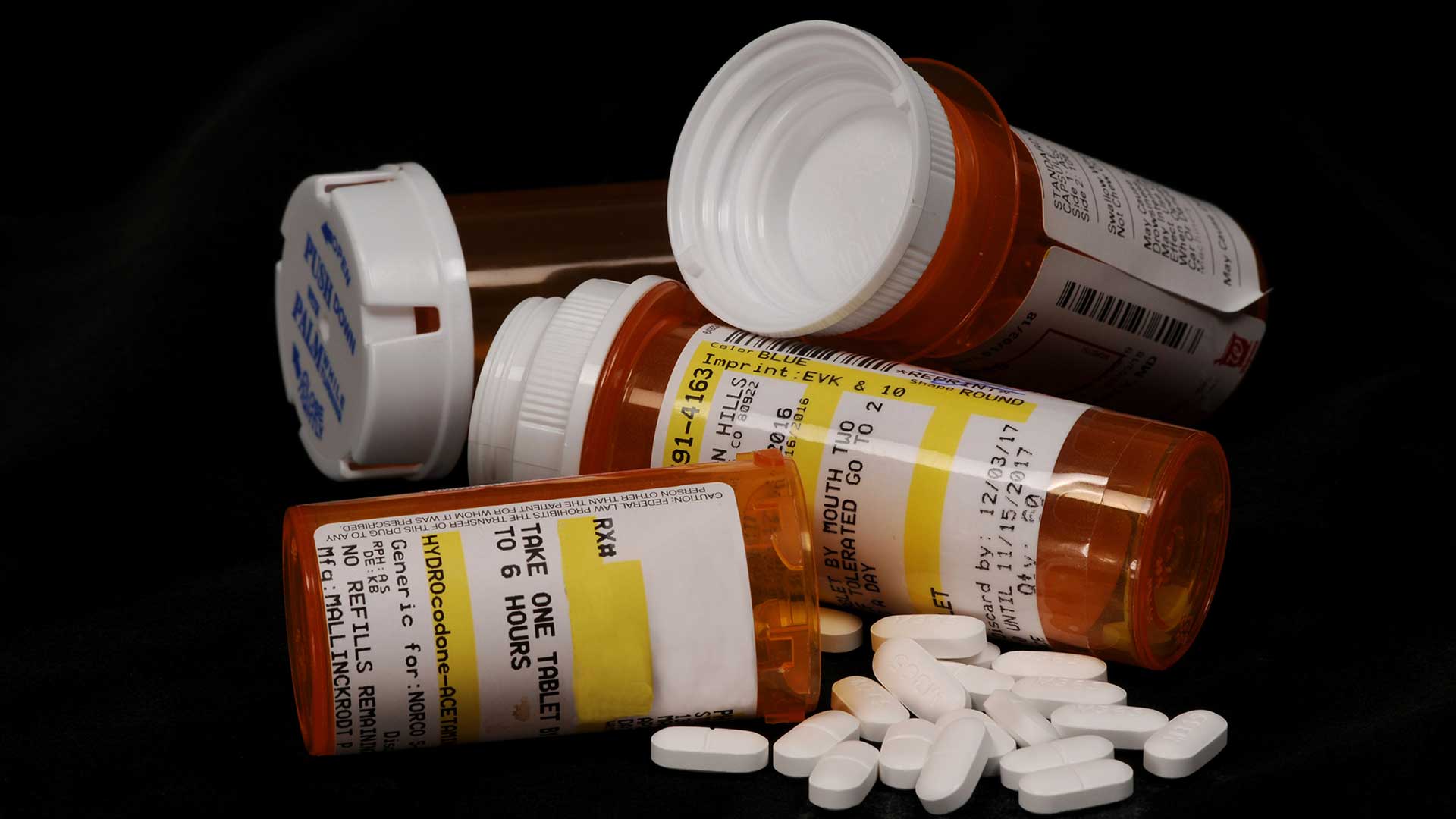 Opioid overdoses in Arizona spiked during March, the first month of the COVID-19 pandemic, and hit a high of 500 in August. Advocates worry that the epidemic, involving both prescription and illicit opioids, is both aggravated by pandemic conditions and masked by them.
Opioid overdoses in Arizona spiked during March, the first month of the COVID-19 pandemic, and hit a high of 500 in August. Advocates worry that the epidemic, involving both prescription and illicit opioids, is both aggravated by pandemic conditions and masked by them.
The Buzz for April 5, 2024

The opioid crisis continues to have a grip on Arizona.
In the past six months, state troopers have seized more than 1500 pounds of fentanyl amounting to roughly 7 million pills.
In that same time, Customs and Border Protection data show that its agents have seized more than 5,400 pounds of opioids at Arizona's ports of entry.
Those numbers may indicate that opioids have moved from the legal pharmaceutical market to the black market of illegal drugs, and another number may help shine some light on why, $1.1 billion. That is a rough amount of what opioid makers and distributors will pay to Arizona over the next 18 years.
Several lawsuits brought by Arizona and other state's attorneys general have led to billions in settlements nationwide.
"The overarching theme is [allowing] state and local governments to recoup billions of tax dollars that have been spent in dealing with the opioid epidemic, and to help right the wrongs that were done by the opioid crisis over the last couple of decades," said Arizona Attorney General's Office Communications Director Richie Taylor. "So it really is about making taxpayers whole for what they've already spent to address these crises over the years and to help people who are suffering or have suffered because of the opioid crisis."
As of the end of fiscal year 2024, more than $35 million was distributed from the state to local governments. The One Arizona Agreement ensures that 56% of money from opioid lawsuit settlements goes to local governments, while 44% stays with the state.
"It's dependent on things like the amount of opioid shipped to the state or ship to the area, the number of opioid related deaths that occurred in the state or in a given area and the number of people who suffer from opioid use disorder," Taylor said.
The total amount of money received so far varies from $30,753 received by Greenlee County governments to $19,794,580 for Maricopa County entities.
While all counties have received some money, only five have spent any to this point: Maricopa, Pima, Yavapai, Pinal and Graham.
The area that has spent the largest portion of its settlement money as of July 1 is Yavapai County, using almost 14% of its $1,466,227.
"Quite frankly, we're a leader in putting the money to work because we already had an established program that we were able to put that money to use and that is a task force that we have with the law enforcement agencies in Yavapai County," said Kristin Greene, Public Affairs and Public Relations Director for Yavapai County Sheriff's Department. "It's called the Partners Against Narcotics Trafficking, which is colloquially called PANT. So we have this taskforce and their job is to work on drug related cases. And when the opioid money became available, it was definitely clear at least at the County Sheriff's Office, that it made sense to put that money into the organization that worked on drug related issues."
Greene noted one important expenditure that the county has added is an overdose death investigator.
"The concept isn't new, but the position is new. There's a movement in law enforcement and in the prosecutorial world. With fentanyl, we know that a dealer is well aware that one pill can kill somebody, that it can cause a death. Now, it's not looking at a school chum who hands you a fentanyl [pill] and doesn't really know what's going on. It's not that. It's the idea of trying to trace back to major dealers, saying you're well aware that what you have is a deadly weapon. And so selling it is facilitating the death of another person."
Other expenses have included efforts at educating the public and helping people who are addicted.
"One of the things that Sheriff Rhodes and Yavapai County really believes in is that addiction and mental illness are not crimes. People with mental illnesses and addictions may commit crimes, but if we can treat and address the underlying issue, they're not going to be causing those crimes."
Among the state-funded programs aimed at combatting opioid use is efforts to get overdose reversal drugs in the hands of the public. One such program is taking place at Banner Thunderbird Medical Center.
 A package of Narcan Nasal Spray, a form of naloxone that can be used to reverse the effects of an opioid overdose.
A package of Narcan Nasal Spray, a form of naloxone that can be used to reverse the effects of an opioid overdose.
"It's been something that's been in emergency departments in Arizona now for a few years," said Dr. Matthew Keeler, an emergency department physician at Thunderbird. "It's supported by the Arizona State Health Services Department. They're the ones putting the funding behind this. And really, the intention is to have a larger distribution program to get Naloxone into the hands of the community."
Dr. Keeler said that while he has seen an increase in overdose patients in recent years, he is also seeing an increase in community awareness of Naloxone, which is often known by the brand name Narcan.
"You can probably tell by now it's becoming more widely available, you can buy it at retail pharmacies or in some instances, it's just free over the counter. Now that is the same experience that we give our patients when they come to the emergency department. It's given to them, their friends and their family members as they're leaving the department."
Dr. Keeler said distributing Naloxone to people who may be at risk of overdose or who are around someone who may be at risk is another tool that can keep an addicted person alive until they are ready to seek treatment.
"If we can get patients to hospitals alive, we have a very good chance at keeping them alive and having good recovery long term. If they come to the hospital, and we can't get to them in time if they overdosed and died before the time that our EMS responders can get to them. We have no hope for that patient."


By submitting your comments, you hereby give AZPM the right to post your comments and potentially use them in any other form of media operated by this institution.